
Five Challenges Facing Historic Buildings and Sites
Preserving historic buildings requires a delicate balance between preserving their authenticity and adapting them to the requirements of the modern era. Here we review solutions that can contribute to their protection and revival
Construct Vision Team
12/9/202417 min read
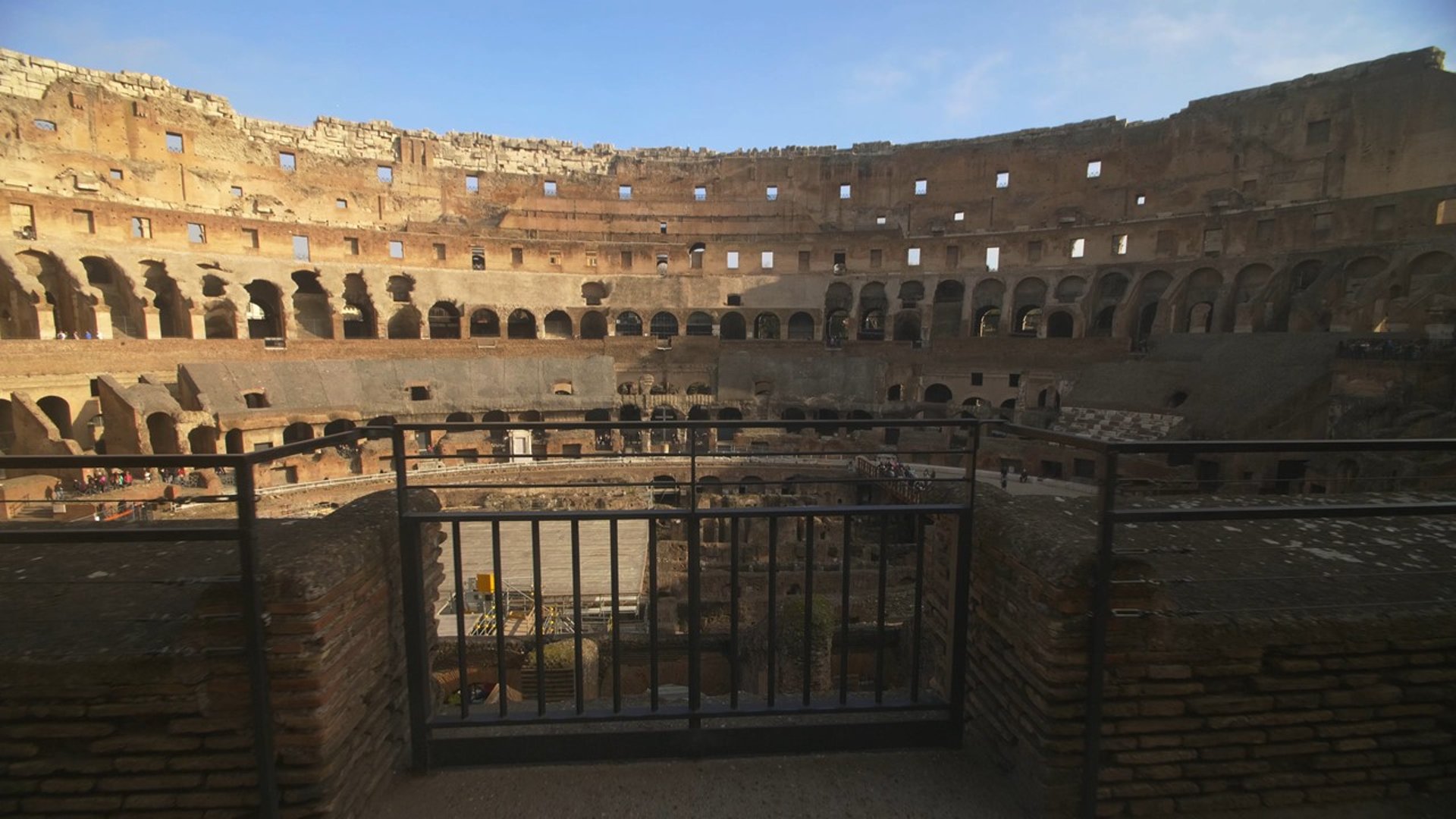
Introduction:
Heritage is not just stones and monuments; it is the memory of nations and the identity of peoples. But this memory, despite its grandeur, faces existential challenges today that threaten to erase it.
Years ago, we highlighted five of these challenges in a widely circulated article. Today, after a deeper journey of research and application, we return not only to reiterate these challenges but also to announce the launch of a larger project aimed at addressing them systematically.
These are the five challenges that formed our starting point, challenges that persist and demand even more urgent solutions.
Challenges
1. Physical Deterioration and Weak Structure:
Historic buildings, due to their nature, building materials, and long age, are highly susceptible to natural and human factors of erosion. Some of the most prominent of these factors are:
A. Weather Factors, Time, and the Impact of Climate Change:
Climate change leads to harsh weather conditions that cause damage to the original materials of buildings, for example:
• Erosion: Winds laden with sand and dust lead to the erosion of stone building facades.
• High humidity levels: Cause the deterioration of wood and metals due to rust or biological decay.
• Earthquakes: Affect, in particular, structures built with old techniques that are not resistant to earthquakes.
According to a UNESCO report, about 20% of World Heritage Sites are exposed to serious impacts due to climate change, including rising sea levels that threaten coastal sites such as the city of Venice in Italy.
B. Wars and Natural Disasters:
• Wars leave a devastating impact on historic buildings, where cities such as Old Aleppo in Syria have been subjected to widespread destruction due to conflicts.
• Natural disasters such as hurricanes and earthquakes pose additional challenges, for example:
- The 2015 Nepal earthquake destroyed 600 historic sites, including hundreds-of-years-old temples in the Kathmandu Valley.
- Hurricane Katrina in 2005 severely affected historic buildings in the city of New Orleans, United States.
The MOSE (Modulo Sperimentale Elettromeccanico) system is a unique engineering project designed to protect the city of Venice in Italy from floods resulting from rising sea levels and high tides (the Acqua Alta phenomenon).
It consists of movable barriers (78 large barriers made of steel, located at the entrances of the lagoon where they connect to the Adriatic Sea). The barriers are naturally submerged underwater, when a rise in water level is expected, the barriers are filled with air to float and close the sea entrances, preventing water from entering. The system is supported by supporting infrastructure of tunnels, reservoirs, and control facilities that manage the operation of the system, and monitoring stations to measure water levels and weather forecasts.
To overcome these challenges, innovative strategies are used, including:
Restoration using modern technology that does not affect the original character and characteristics of the materials:
o Analyzing the structure using LiDAR (Light Detection and Ranging) and 3D scanning to identify weak points in the structure of the landmark.
o In the Jordanian city of Petra, techniques were used to analyze the surrounding rocks to protect them from erosion due to rain.
In general, this field is large and promising, and every day there are more important and effective techniques in this field.
There are also innovative preventive measures for each case, such as developing water drainage systems to protect against floods. For example, in the city of Venice, the MOSE system was built to protect against rising sea levels.
There is no doubt that international cooperation plays a major role, especially in:
o Enhancing international initiatives such as the World Heritage Emergency Fund, which supports urgent restoration processes for affected sites.
o Developing customized protection plans based on climate risk analysis.
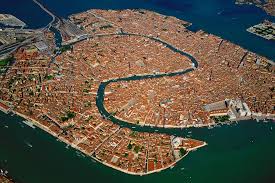

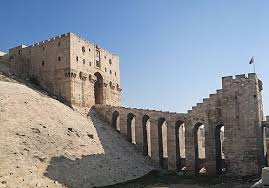

To overcome these challenges, restoration efforts need to rethink funding methods and transform them into sustainable projects. Here are some examples:
Public-Private Partnerships:
o Governments can cooperate with private companies to fund restoration in exchange for usage rights or advertising.
Example: The Colosseum theater in Rome was restored with funding from the fashion company "Tod's," which obtained the rights to use it for commercial purposes for a specific period.
Converting Buildings into Productive Centers:
o Exploiting historic buildings as tourist destinations, or converting them into museums, or cultural and educational centers according to their nature, without the possibility of harming the building and its characteristics.
Example: Ashford Castle in Ireland was converted into a luxury hotel, which contributed to funding its maintenance and preservation.
Establishing National and International Heritage Funds:
o Allocating funds that are funded through taxes on tourism or voluntary donations to support restoration projects.
Example: The World Heritage Fund of UNESCO funds emergency restoration processes for sites listed on the World Heritage List.
Encouraging Sustainable Tourism:
o Attracting tourists through cultural events held in historic buildings, which generates income that can be used for maintenance and restoration. In many countries, historic buildings are used to host various artistic and cultural events.
Technology for Fundraising:
o Using digital platforms such as "Crowdfunding" to collect donations from heritage enthusiasts around the world.
Example: A project to restore the Great Wall of China used electronic platforms to collect donations from individuals.
With innovative strategies that rely on financial sustainability and effective partnerships, preserving historic buildings can be transformed from a financial burden into a long-term economic and cultural investment.
2. Funding and Limited Financial Resources:
Limited budgets are one of the biggest obstacles facing efforts to preserve historic buildings. These projects are often considered to have a low priority compared to other development requirements, which leads to their neglect or the postponement of their maintenance for long periods. There are two main aspects to this problem:
A. Lack of budgets allocated for the restoration of buildings:
• Restoring historic buildings requires huge financial resources due to the high costs of materials and specialized techniques.
For example, in India, the restoration of the Taj Mahal requires an annual budget estimated in millions of dollars, yet there is a continuous shortage of funding.
B. Absence of an investment plan to transform restoration into a self-financing sustainable project:
• Restoration processes often rely only on grants or government funding, which makes them vulnerable to economic crises or political priorities.
Example: Many Ottoman palaces in Turkey were facing the risk of neglect until some of them were converted into museums or hotels to attract economic returns.
3. Conflicting Modernization with Authenticity:
Preserving historic buildings requires a delicate balance between maintaining their authenticity and adapting them to the requirements of the modern era. However, this balance faces obstacles ranging from social and functional pressures to commercial exploitation and deliberate neglect, making the preservation of authenticity a complex task:
A. Social and Functional Pressures to Adapt Buildings to Modern Use:
• There is often a need to adapt historic buildings to meet new needs, such as adding electrical systems or improving accessibility for people with disabilities. These updates, if not implemented carefully, can lead to the loss of historical identity.
Example: Villa Rufolo Palace in Italy, a historic site that became a venue for musical performances while maintaining its original features through innovative design solutions.
B. Commercial Exploitation or Deliberate Neglect:
• Some buildings are converted into commercial centers or tourist facilities to an excessive extent, which accelerates their deterioration due to inappropriate use.
• On the other hand, other buildings are neglected due to their lack of direct profitability, making them vulnerable to extinction.
Example: Many historic baths in Istanbul are exploited as cafes or shops, which has deprived them of their original character.
C. Unsustainable Tourism:
• The large influx of tourists without organization leads to pressure on structures and infrastructure.
Example: Machu Picchu in Peru is facing a significant risk of deterioration due to the huge increase in the number of visitors.
D. Culture and Awareness:
• Some people neglect historic buildings due to a lack of awareness of their cultural and historical importance, which increases the likelihood of their demolition or encroachments. There are many examples of this, as many sites in the Arab world are demolished or converted into other projects due to the absence of strict laws or sufficient community awareness.
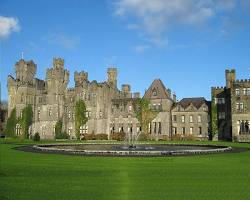



Some measures can be effective in this field, including:
o Establishing strict systems and laws that define the permitted use.
o Providing studies and documentation processes that are the primary reference for any future update.
o Using modern restoration techniques that are invisible, respecting original elements, and not harming their structure and characteristics.
o Adopting reversible designs that can remove additions without damaging the original structure.
o Encouraging the choice of uses that preserve the historical character, such as converting some buildings into museums, cultural centers, or others.
o Providing financial support for non-profitable buildings to preserve their heritage, and providing incentives for owners to preserve buildings instead of neglecting or demolishing them.
o Including education about the importance of heritage in school curricula.
o Organizing awareness campaigns and promotional initiatives to encourage local communities to participate in protecting heritage.
o Developing tourism management plans, such as setting a daily ceiling for visitors or organizing special routes to protect sensitive parts of the facilities.
o Enhancing tourists' awareness of the importance of respecting historical sites, and guiding them to appropriate behavior during their visits.
o Developing tourism management plans, such as controlling tourist service facilities and organizing visitor movement or creating mandatory and protected routes.
Update that respects authenticity requires a partnership between designers, government officials, and the community. Implementing well-studied and sustainable updates ensures that these buildings continue to meet the needs of the present while preserving the spirit of the past.
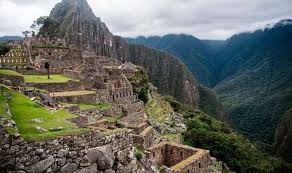

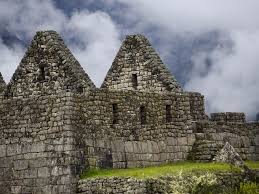

4. Lack of Public Awareness and Appreciation for Heritage and Technical and Knowledge Challenges:
The lack of awareness and appreciation for cultural heritage and the challenges associated with technical knowledge represent a major obstacle to preserving historic buildings. These challenges not only lead to neglect, but also contribute to the deterioration of the condition of these buildings and the loss of their identity.
A. Lack of Awareness of the Value of Historic Buildings:
• Some people consider historic buildings to be just old structures of no use, which leads to a lack of interest in their maintenance or their distortion through inappropriate modifications or demolition.
Example: In some developing cities, entire historical sites have been demolished to make way for modern projects due to a lack of awareness of their cultural and historical value. A report issued by UNESCO indicates that 60% of historical sites in the developing world are at risk due to neglect and lack of awareness, which is a huge and frightening percentage.
B. Lack of Expertise in Restoration Techniques:
• Preserving historical elements requires specialized knowledge of old construction techniques and original materials. Lack of this expertise leads to the use of modern techniques that may harm buildings more than they protect them. There are many such practices, such as some attempts to restore Roman artifacts using modern cement, which damaged the structure due to the difference in chemical properties.
C. Lack of Knowledge of Appropriate Maintenance Processes:
• Lack of familiarity with appropriate behaviors leads to the deterioration of buildings. Example:
- Using inappropriate cleaning materials on stone walls leads to their erosion.
- Allowing the addition of cables or devices that are not well-studied to the facades of historic buildings.
Here are some ideas that may be effective steps to change the public perception of these historical landmarks:
o Including educational and cultural programs to enhance community awareness of the value of heritage.
o Involving local communities in restoration projects to give a sense of ownership and responsibility.
o Establishing specialized training centers in traditional and modern restoration techniques.
o Enhancing international cooperation to exchange experiences between countries with advanced expertise in preserving heritage.
o Publishing simple and targeted guides for the public about appropriate behaviors to preserve historic buildings.
o Organizing training courses for maintenance workers to raise their awareness of correct practices and develop their skills.
o Providing materials or skills compatible with archaeological and historical buildings, each region according to what suits it.
o Encouraging scientific research in the field of restoration and preservation.
Dealing with the lack of awareness and technical challenges requires a comprehensive approach that combines community awareness, technical education, and international cooperation. When people realize the value of their heritage and workers acquire the necessary technical skills, preserving historic buildings becomes possible and sustainable.
5. Inflexible Laws and Regulations:
Laws and regulations are one of the main tools for protecting historic buildings, but when these laws are inflexible or inadequate, they hinder restoration processes and the preservation of heritage. This problem affects several aspects:
A. Unclear or Complex Laws:
• In many countries, restoration laws are complex and inconsistent, making the implementation of restoration projects a bureaucratic challenge.
For example:
- Some laws require multiple approvals from different government bodies, which prolongs the preparation period for restoration projects.
- In Spain, restoration projects for many sites in Barcelona were delayed due to conflicting laws between local and national bodies.
B. Disputes over Building Ownership:
• The ownership of historic buildings is often a subject of dispute between heirs, private institutions, or governments, which delays restoration projects or completely prevents them.
Example: In Cairo, many historic houses are owned by individuals who are unable to bear the costs of restoration, yet they refuse to transfer ownership to the government or interested parties.
C. Weak Laws Related to Heritage Protection:
• In some countries, penalties for violations against historic buildings (such as illegal demolition or neglect) are not deterrent, which leads to the exacerbation of the problem.
Example: In Iraq, many historical sites were destroyed due to weak laws and supervision.
There are many initiatives that have been tried in many countries and their results were very good, including:
o Simplifying legislation by establishing comprehensive and integrated laws for the management and protection of heritage.
o Establishing a one-stop shop for approvals related to restoration to speed up processes.
o Developing legal policies that facilitate the settlement of disputes over ownership, such as compensating owners or involving them in investment plans to preserve buildings.
o Establishing funding programs that support owners in restoring their historic properties.
o Enhancing laws by adding strict penalties for damaging historic buildings.
o Allocating monitoring budgets to ensure the effective implementation of legislation, and establishing specialized bodies to manage buildings of historical value.
o Involving international organizations such as UNESCO in supporting legislative efforts in countries suffering from weak laws.
Here are some examples and creative solutions:
- The National Heritage Law in France: It gives the government the right of priority in purchasing historic buildings if they are threatened, which allows it to intervene to preserve them.
- Japan is known for its traditional wooden architecture, which requires special care to preserve it. There are many government and private programs aimed at protecting these buildings and encouraging the use of traditional materials in restoration.
- The Architectural Heritage Fund (AHF) program in the United Kingdom provides financial and advisory support for projects aimed at restoring and reusing historic buildings. This fund provides funding for projects aimed at preserving cultural heritage in the United Kingdom, conducting historical research, and implementing awareness programs.
Strong and flexible laws represent the cornerstone of heritage preservation efforts. By reforming and strengthening legislation, the community and government bodies can be empowered to effectively protect historic buildings and turn them into sources of pride and sustainability.
The conclusion:
These five challenges—from urban sprawl to funding shortages—are not isolated issues but rather a complex web of threats that require concerted efforts and innovative solutions.
It is no longer enough to identify the problems; it is time to take action.
For this reason, and because every challenge is an opportunity for innovation, we are currently working on launching the www.construct-vision.com platform, which will be available in early 2026.
If you are interested in joining a community of experts and those passionate about preserving our heritage, and would like to be among the first to receive exclusive access to the platform and our free research report, please join our waiting list here.
Get ready. The journey to protect our human heritage will start soon.
Case study: Taj Mahal building in India
The Taj Mahal, the famous building in India and one of the Seven Wonders of the Modern World, is a global symbol of architectural beauty and eternal love. It was built in the 17th century using white marble and combines elements of Islamic, Persian, and Indian architecture.
The Taj Mahal is an icon of Mughal architecture, built between 1632 and 1653 by order of the Mughal Emperor Shah Jahan in commemoration of his wife Mumtaz Mahal. The design is characterized by perfect harmony between form and function, making each element a work of art in itself.
The Taj Mahal is listed on the UNESCO World Heritage List, and was included on this prestigious list in 1983 in recognition of its unique architectural beauty and its historical and cultural value.
The Taj Mahal combines elements of Islamic, Indian, and Persian architecture, as mentioned earlier, and reflects a period of prosperity of the Mughal Empire. It is a witness to the skill of craftsmen and artists of that era.
Listing the Taj Mahal on the World Heritage List provides international protection, which means that the international community pledges to preserve and protect it from destruction. Listing contributes to attracting more tourists from around the world, which enhances the local economy. Listing also increases awareness of the importance of this historical and cultural landmark, which encourages its preservation.
The architectural design of the Taj Mahal:
The architectural design of the Taj Mahal is characterized by a symmetrical plan, featuring precise geometric symmetry:
The mausoleum is located in the middle of a vast area of gardens and water channels. The central dome is the most prominent feature of the building, with a height of approximately 35 meters, surrounded by four smaller domes. It is believed that its shape is inspired by designs of Persian mosques.
The minarets are designed to lean slightly outward, which is said to protect them from falling on the mausoleum in case of earthquakes. The exterior walls are adorned with Arabic calligraphy inscriptions in black marble carrying verses from the Quran, executed with extreme precision to appear uniform in size from all angles. The surrounding gardens are inspired by designs of Persian gardens, divided into four parts by water channels, representing the River of Paradise.
The building was constructed using luxurious white marble imported from the city of Makrana in the state of Rajasthan. It is a high-quality stone that reflects light in different colors depending on the time of day and lighting. The walls were also inlaid with more than 28 types of stones such as Jasper, Agate, Turquoise, and Lapis Lazuli.
Red sandstone was used in the construction of some surrounding elements of the mausoleum, such as the gates and the mosque. The structure was also reinforced with materials such as brick and lime, and compounds such as gypsum were used as a binding material.
Advanced engineering systems were used to transport water to the Taj Mahal through a series of channels and pumps, ensuring a continuous flow of water in the fountains and gardens.
The challenges:
The Taj Mahal, a building that requires special care to preserve its beauty and the splendor of its original design. Restoration processes in the Taj Mahal require extreme precision and high craftsmanship due to the value of this historical landmark and its global importance.
1. Environmental Pollution Impact:
o The white marble has been exposed to a change in its color due to air pollution from nearby industries and river waste, which has led to what is known as "gradual yellowing." Due to the huge deposits of acids, the continuation of this air pollution may lead to its erosion.
o Construction Activities: Construction activities in the areas surrounding the Taj Mahal may affect the stability of the building and cause small earthquakes.
2. Climate Change:
o Changes in temperature and humidity affect the stability of the building's structure, due to cracks, and cause damage to the marble.
o The deterioration of the banks of the neighboring Yamuna River threatens the safety of the foundations.
3. Tourism Management:
o The Taj Mahal's reception of more than 7 million visitors annually puts a great deal of pressure on the infrastructure and increases the likelihood of deterioration.
Solutions and Procedures Followed:
A variety of modern techniques and traditional craftsmanship are used in the restoration of the Taj Mahal, and the most important of them are:
1. Specialized Cleaning Programs:
o The marble is cleaned periodically using "Fuller's Earth" clay, which is a safe technique that does not cause additional erosion.
o In some cases, laser beams are used in cleaning processes to remove dirt and pollutants from the marble surface without damaging it.
o Natural materials are used in repairing small cracks and rebuilding damaged parts.
2. Strict Laws:
o An environmental protection area known as the "Taj Trapezium Zone" was established to ban polluting industries around the site. And reducing pollutant emissions from neighboring industries.
o Continuous efforts: The efforts of the Indian government and international organizations are combined to preserve the Taj Mahal, and continuous restoration projects are implemented to ensure the permanence of this historical landmark forever.
3. Sustainable Restoration Procedures:
o Advanced techniques are used to examine the safety of the structure, such as 3D scanning.
o Continuous monitoring: Sensors are used to monitor any changes in the condition of the building, which helps to detect problems early and take the necessary measures.
o Drainage systems are developed to prevent the effects of moisture, and the humidity level inside the building is controlled to prevent the growth of fungi and the deterioration of marble.
4. Tourism Management:
o The daily number of visitors is determined, and higher entrance fees are applied during peak periods to help reduce pressure and collect funds for restoration.
o Awareness campaigns are organized to increase the awareness of visitors about the importance of preserving the Taj Mahal.
Lessons Learned from This Experience:
• Preserving authenticity requires the use of materials and techniques compatible with the original elements.
• Modern technology (such as digital scanning) and traditional solutions can be combined to provide effective protection.
• Managing the surrounding environment and tourism is an essential element for the sustainability of historic buildings.
• Restoring historical landmarks is a duty for everyone to preserve them for future generations.
• Preserving heritage supports traditional crafts by using local craftsmen in restoration processes, which helps to preserve traditional crafts and enhance the local economy.
Large Budgets:
• The Indian government allocates large budgets annually for the restoration and maintenance of the Taj Mahal. India also receives financial and technical support from international organizations such as UNESCO to assist in restoration efforts. The private sector also contributes to funding restoration projects.
• However, restoration processes are complex and require high skills, which raises their cost. There are also ongoing changes, as the condition of the Taj Mahal requires continuous evaluation, which means that budgets may change according to needs.
The aim of restoring the Taj Mahal is to ensure its continuity for future generations, so the focus is on sustainable solutions that maintain the balance between preserving heritage and meeting the needs of the community. The goal is to preserve this global landmark as a symbol of civilization and history.
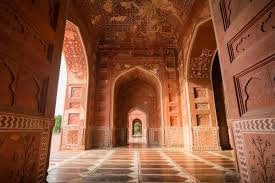

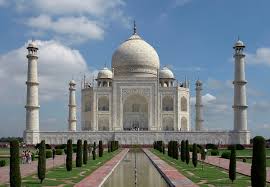

"Fuller's Earth" (Fuller's Earth): "Fuller's Earth" is a type of natural clay that is characterized by strong absorption properties. It is commonly used to clean sensitive surfaces and remove impurities. It is distinguished by its light color (usually gray or light brown) and its soft texture.
It is a natural material with high absorption properties, consisting mainly of clay minerals such as bentonite and montmorillonite. Fuller's Earth has been used for centuries in many applications, starting from cleaning and cosmetics to heavy industries. Fuller's Earth has a unique porous structure that allows it to absorb liquids, impurities, and odors. When Fuller's Earth comes into contact with a liquid or gaseous material, its small particles attract and trap the particles of the other material within its porous structure.
Some suggested sources for further reading:
- UNESCO report on heritage and climate change: UNESCO Climate Change and Heritage.
- Study on the impact of earthquakes on heritage buildings: "Heritage Structures and Earthquakes" - published in the Journal of Structural Engineering.
- Report on natural disasters and their impact on heritage: World Heritage and Disasters.
- UNESCO - Taj Mahal: Information about the importance and history of the Taj Mahal as one of the World Heritage Sites.
- Book: Islamic Art and Architecture: From Isfahan to the Taj Mahal by Henry Stirling. It discusses the details of the influence of Islamic architecture in the design of the Taj Mahal.
- Archnet Digital Library: Architectural resources about the Taj Mahal and the stages of its construction.
Subscribe to our newsletters
Share our post
New Platform Coming Soon!
Join the Expert Community and Get Exclusive Access


